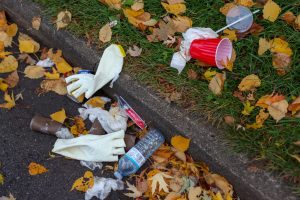Of Pivoting and Plastic

To view the photo-rich magazine version, click here.
Originally appears in the Summer 2020 issue.
By Melanie Master
If you’re an avid teacher of the Next Generation Science Standards (NGSS) or a similarly-structured science framework, you likely felt a shiver run down your spine when you thought about how to teach remotely. You probably wondered, “How can I offer my students phenomena-based, inquiry-driven instruction in a virtual format?”
If I have learned anything from teaching remotely, it’s that there is little replacement for in-person interactions to guide learning. However, I discovered that NGSS-aligned environmental education is still possible in a virtual format through a middle-level interdisciplinary project. The Great Pacific Garbage Patch (GPGP), which involves understanding ocean currents, water cycle, and environmental science, is the perfect phenomenon for creating such a project for middle school students.
This content is restricted to subscribers only.
If you are not yet a subscriber, please consider taking out a subscription here.
If you are an existing subscriber, kindly log in or contact us at info@greenteacher.com for more information.





